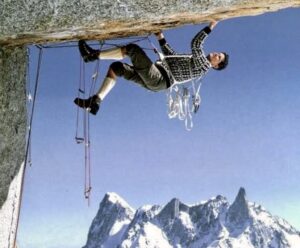Report from a meet-up marathon (7 pictures)
(Tina Sjogren) Monday two weeks ago we embarked on a Silicon Valley meet-up marathon.
Kicking off with a big virtual reality presentation at Stanford at lunch; late afternoon we hurried to downtown SF for a meetup at Mozilla about data-mining satellite images; ending back in the valley for a night-cap about mixing liquid fuel for rocket launches.
Here goes the debrief, in 2 parts.
#The Experience of Immersion at Stanford
Attending a virtual reality lecture at the University the previous week we were invited to The Experience of Immersion at Stanford by chance.
It’s like that here in the valley, if you are a doer of some kind all events are free, and they even feed you pizza and wine to attend. Real-estate still comes at a prime though so be prepared to sleep under the bridges.
The occasion consisted of a demo floor and a stage with speakers and panels. We started with some history.
#Viewing boxes to virtual platforms
Mainly used by the military VR has been around for a while, actually 30 years or more depending on how you define the technology.
We’ve gone from stereoscopes to red-green plastic glasses, 3d-postcards, 360 video, gaming consoles, Google glass, Oculus rift and more. The success of immersion has been uneven over the years though, so will the technology stick this time?
Yes, believed industry veterans on stage this day, mainly thanks to Oculus expanding the experience and Samsung incorporating the hardware with the phones we already got.
Merging with the viewing boxes are new virtual platforms. Taking the tech beyond gaming, most notably Facebook and a new Second Life are hoping to make the experience a daily social happening.
#Our takeaway
Already back in 2011 a clunky Oculus developer kit was featured in our Pythom shopping test stream. 2013 we got to try it in a small meeting downtown SF, around the time FB entered the scene.
Since then we’ve stumbled on the goggles here and there, and watched the movement grow.
Our takeaway from this latest event:
Cons – VR remains bulky and hard to navigate (you’re blinded and disconnected from your hands).
Pros – the experience does have some very interesting effects.
#Master your fear of heights
One exhibitor specialized in virtual environments for people suffering phobias (fear of heights, open spaces, flying, etc).
I donned the ski-goggles and tried the flight simulation. I was seated in a plane bound to take off and sure enough, the familiar feeling of lingering fear instantly crept up my spine. As the plane taxed out I became aware this situation wasn’t real and relaxed.
Still – our plastic brains mold automatically to stimuli we feed it, and I could see how exposing myself repeatedly to this uncomfortable situation would sooner or later translate to lack of response in reality. I don’t get this feeling when watching a plane tax on TV so the immersion seems to be key.
Surprisingly many climbers and sky-jumpers have fear of heights; virtual exposure therapy – if used consistently – could help overcome irrational actions and thoughts.
Another technology showcased augmented reality for medicine (AR means you stay connected with the real world). This tech was based not on goggles but pads: Place a pad over another and now you can rotate and zoom in and out of the heart and other internal organs.
Watching my clogged arteries this way would probably make me prone to lifestyle changes (or to take my drugs which is one of the ideas behind it).
#Nepal’s earthquake in your own living room
I’d love to ride a lightwave with Einstein to imagine how he (or his wife Mileva) came up with e=mc2.
In the education corners, a couple folks ran surfing videos for Discovery channel and a Google crew showcased Google expeditions: If you can’t take the kid to the Moon – take the Moon to the kid – is the idea behind this roadshow based on low-cost ($10) Google cardboard. Less intense than Oculus the experience still does the job at a cost anyone can afford and youtube supporting it.
As for shooting your own 360 videos in VR for your sponsors, there are a number of low cost camera opps.
#Ando’s experience
Our best experience this afternoon was in a project put together by Ando Shah, valley resident, native of India.
15 years ago we spent rest days in Everest BC watching movies on a Sony head mounted display. One favorite past-time was to film locals, connect the display to the video cam and let them watch themselves on the immersive screen.
Fast forward and turn the table: Ando Shah was visiting back home in India when the quake struck Everest this spring. Grabbing his VR cam, Ando went to Kathmandu to visualize the extent of the damage. In Ando’s Samsung box we watched the familiar first video of the Everest avalanche hitting base camp.
The Everest clip was in 2D but then the movie cut to scenes from Kathmandu in VR. All of a sudden we mingled among monks and locals at Durbar square, confused faces and rubble surrounding us. Despite covering the situation with countless stories and pictures at the time, “wow,” we thought to ourselves, “is this how bad it was.”
#Standard needed
If a standard can be agreed on, this time we’re probably ready to skip between parallel realities. VR is becoming affordable ($100 Samsung + plus the phone, $300 Oculus dev kit) and brings you deep into all kinds of action. Definitely something I’ll want to bring on my Spaceship to Mars for daily hikes in Himalaya and the Rockies.
After the trip though, for added touches in my minimalist Malibu living room, I’ll probably want Augmented Reality, holograms as promised by Microsoft Hololens or the Magic Leap.
Next: Silicon Valley Marathon Meetup Debrief, final: Space (big data and rocket fuel home-brew)






